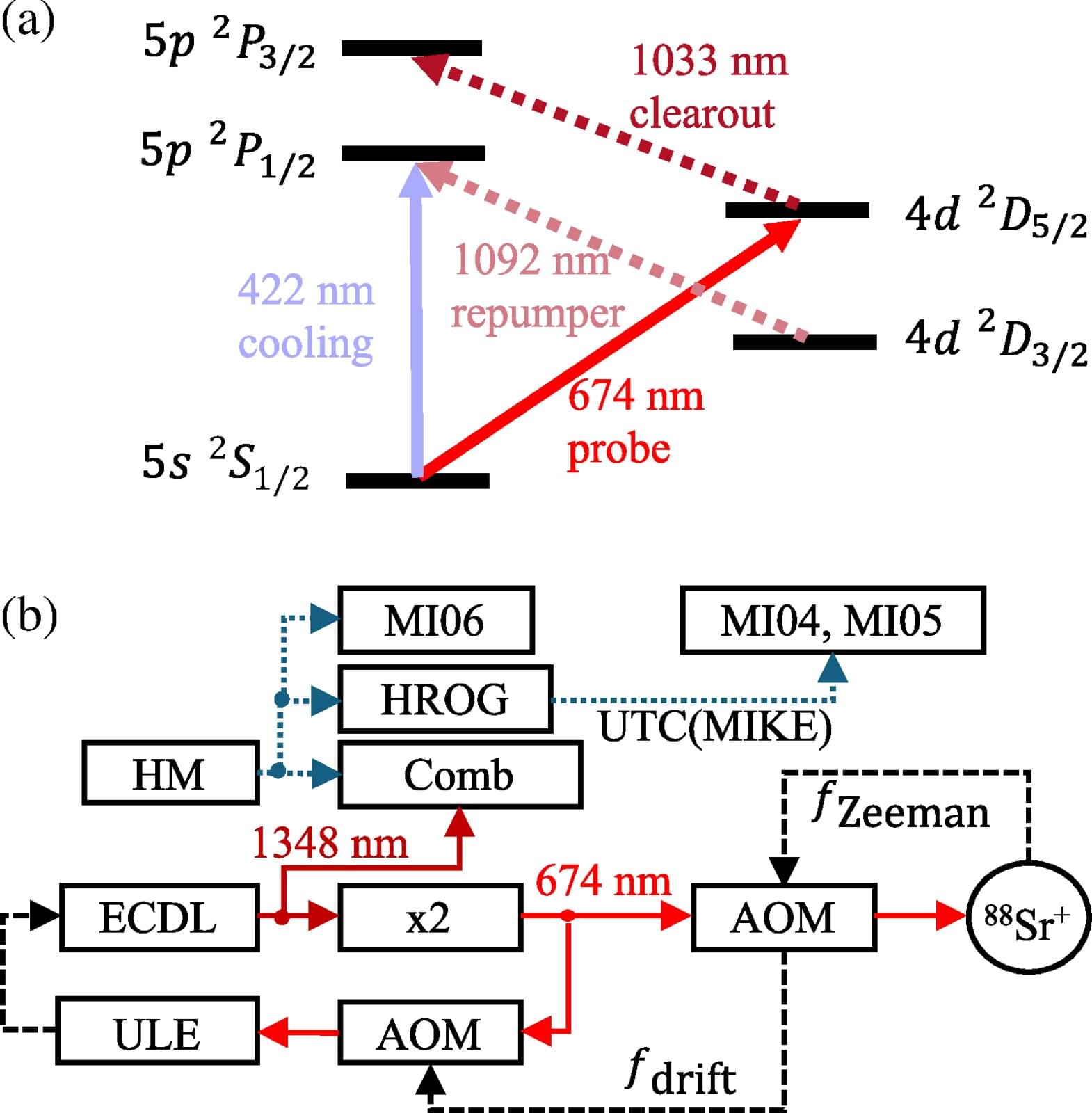A research team at VTT MIKES has set a new record in optical-clock absolute frequency measurements using a strontium single-ion clock with exceptionally low uncertainty and high uptime.
The official definition of the second is set to be updated for the first time in decades. The change will be based on new optical clocks, which are far more precise than today’s standards.
Now, researchers at VTT MIKES have demonstrated a strontium single-ion optical clock with an exceptionally low systematic uncertainty of 7.9×10⁻¹⁹, among the lowest ever reported. Over 10 months, the clock’s frequency was measured against International Atomic Time (TAI) with an impressive 84% uptime. The record-setting total uncertainty of this measurement was just 9.8×10⁻¹⁷, limited by the cesium clocks that realize the current definition of the second and calibrate TAI. The study is published in Physical Review Applied.









